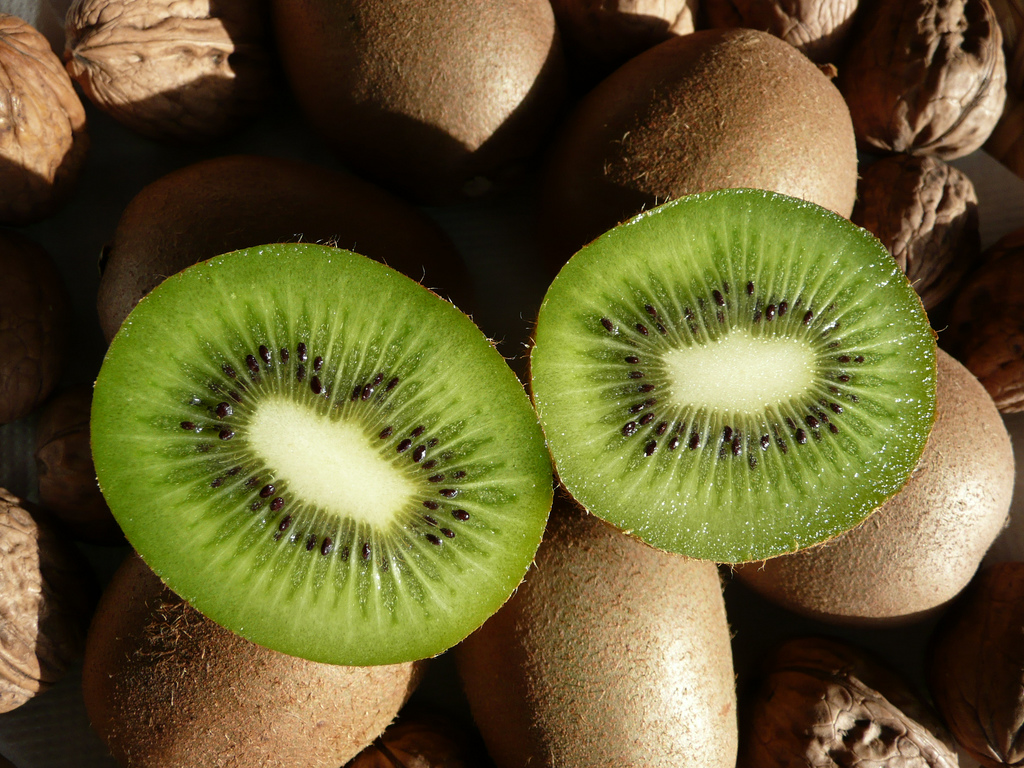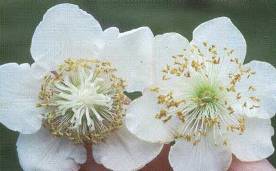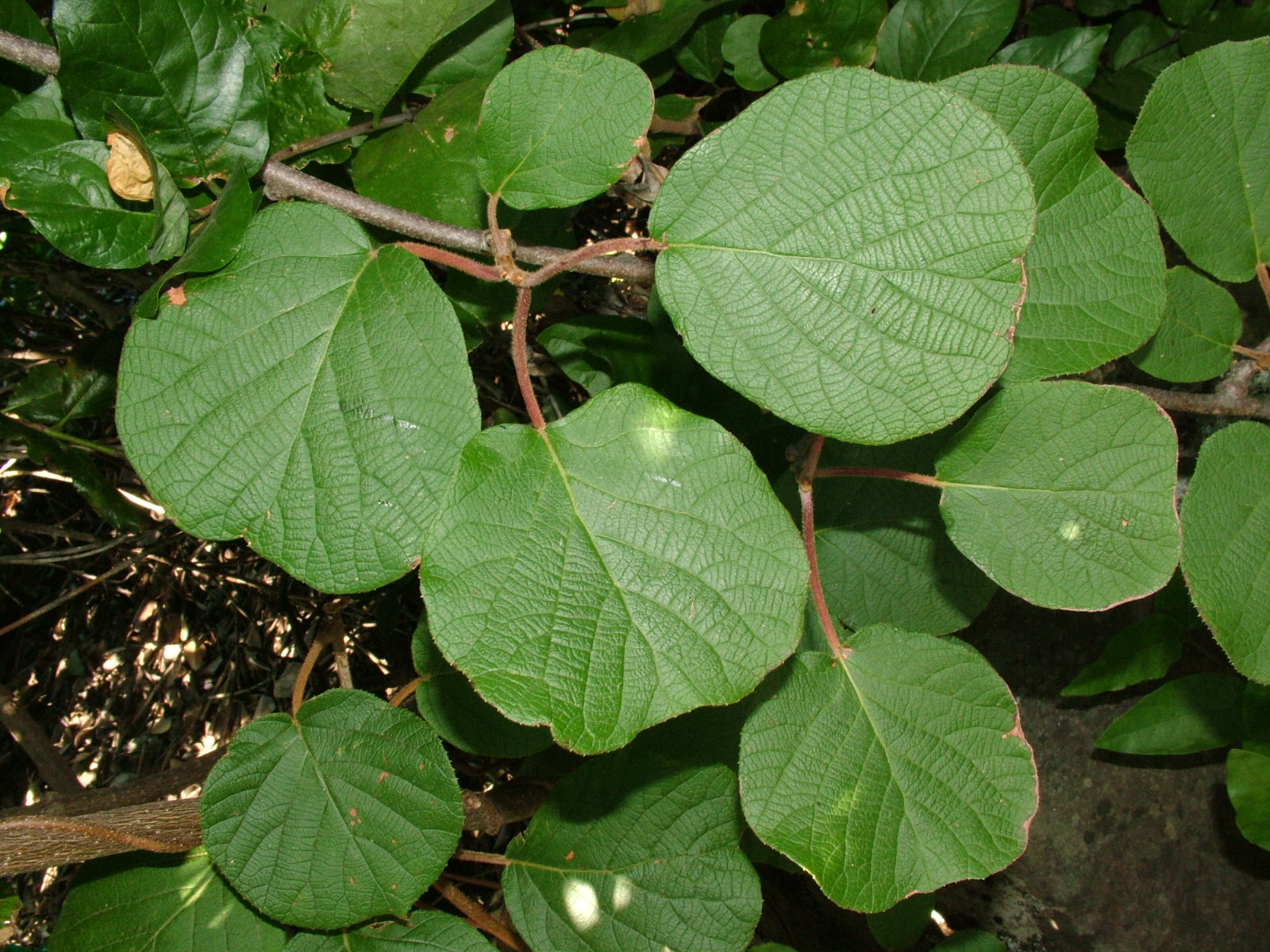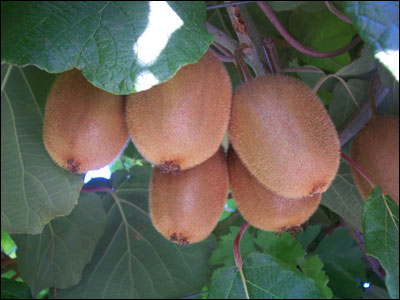Adaptations
Even though the kiwifruit is very picky in the type of
habitat it lives in, it still has adapted in many ways to
increase its chances of survival. 
One of the most important general adaptations is that Actinidia
deliciosa is an angiosperm. This means that the seeds and ovules
are enclosed in carpels which provide an enormous increase in
reproductive protection when compared to gymnosperms like the
Eastern white pine tree. The fruit that we eat is actually
the ovary of the plant that has developed due to pollination and
fertilization (see Reproduction
for more information).
Being an angiosperm also means that kiwifruit have a more
specialized form of pollination and seed dispersal. This is
another major adaptation from other plants in the area. The
plants with this adaptation do not have to rely exclusively on water or wind
for pollination. A. deliciosa is able to take advantage of the
various and numerous insects leaving near it, like the
Honeybee, to help carry pollen and fertilize the
female plants.

However, the kiwi flowers are not
particularly appealing to bees and other insects. The simple
white flower does not necessarily attract the insects. The plant
has adapted to overcome this problem though. The flowers are
very large, one to two inches, and extremely fragrant which
attracts the pollinators and makes up
for their lack of appeal.

Being a plant, Actinidia deliciosa relies on photosynthesis to
generate energy. All plants, including kiwifruit, have adapted
in order
to optimize their ability to catch sunlight. The kiwifruit plant
has leaves arranged in an alternating pattern which, at first, may not seem
like a big deal but can make all the difference. These
alternating leaves provide a greater opportunity for exposure to sunlight, in
turn allowing for more photosynthesis to take place which
results in more energy provided for the plant.

Even the characterizing brown hairs on the surface of the fruit
skin are an adaptation. Many fruits can get damaged by insects,
specifically fruit flies. The fruit of A. deliciosa is covered
in these tiny hair-like projections which help to protect the
fruit from fruit fly and other insect damage.
As also stated on the habitat page, a
growing kiwifruit vine is extremely
sensitive to temperature changes. It is has been able to adapt
and be able to withstand temperatures down to 10°F. The plant must
be able to adjust to severe temperatures slowly because abrupt temperature
plummets can cause extreme vine and bud damage.
Kiwifruit is unable to move. However, it and other plants are incredibly successful for being immobile organisms. They acquire all of their nutrients and materials without even moving. They have adapted to bring these materials to them rather than moving to the source! Kiwifruit vines have internal transport tissues to carry materials throughout the plant, roots and leaves. They utilize their roots to absorb a high amount of water and their leaves to absorb sunlight to generate energy. This topic is continued on the next page, Nutrition.